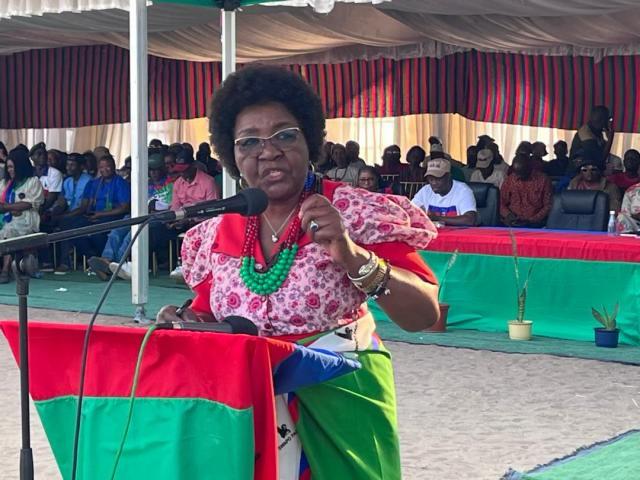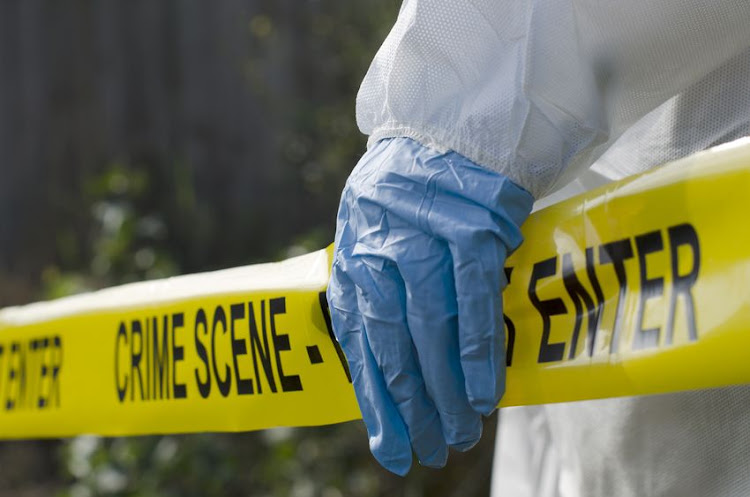The Independence Memorial Museum is meant to be an exercise in the power of memory. At its inauguration on 21 March, President Hifikipunye Pohamba remarked that successful nations are those that learn from and appreciate their history.
President Pohamba said the construction of the Independence Memorial Museum was part of fulfilling the sacred task to tell, record and preserve Namibia’s history. He described the museum as a centre where Namibia’s long history of anti-colonial resistance and national liberation struggle is told.
I wanted to see that history. I wanted to be one of the first people who told the story of Namibia’s pride and so, with a bunch of eager friends, we went there with a camera, pen and notebook in hand, the full armour of any journalist.
We galavanted through the city centre to eventually reach the grandiose museum situated right between the Alte Feste Museum and the Christus Kirche on Robert Mugabe Avenue.
And there we met, standing guard, the giant bronze statue of the founding president Sam Nujoma, holding high the constitution in his right hand.
Many may contemplate the fact that he carries a mere book in his hand, but I understood immediately the significance.
The constitution is a book of law. It is there to demonstrate the power of freedom. It means that a country and its people that were once ruled with a heavy hand are now free. Free to enjoy equal rights, enjoy human dignity and free to govern themselves.
With that in mind we step into the elevator of the museum expecting nothing but a trip down memory lane. With four floors leading to galleries of various exhibitions that depict the long history of anti-colonial resistance and the national liberation struggle, the first houses paintings of freedom fighters with visible familiar faces.
Stepping into the next corridor is a wall with a collection of photographs of famous freedom fighters such Cornelius Frederiks, a leader of a guerilla group from Bethanie.
These images elicit an emotional response as they document how various uprisings started during the different periods in Namibia’s history.
Statues of Nehale Mpingana, Chief Samuel Maharero, Chief Ipumbu Tshilongo and Captain Hendrik Witbooi stand proudly. These are all brave men who took up arms against the South African colonisers and to this day their names echoed through Namibian history.
One of the highlights in the museum is the Chamber of Horrors, dedicated to the 1904 to 1908 genocide that saw thousands of Nama and Herero people killed by German soldiers.
It was surely a dark and painful time in the lives of many people who faced brutality from the colonisers. You can sense the pain and suffering people went through just by looking at the images and bronze etchings on the walls.
Another mural shows the horror of the Cassinga Massacre on 4 May, 1978. A camp attacked by the South African army. Hundreds of Namibians, mostly women and children, were killed by the South African army that day.
Many songs are still sung in remembrance of a day many would like to forget. Pohamba remarked at the inauguration of the museum that Namibians are filled with sadness when they recall the horrors their people were subjected to while under colonial rule.
“Thousands lost their lives, however, we are fortified by the knowledge that the current and future generations will continue to carry the flame of the revolution forward.”
And the future generation, people like Quinton Awaseb have surely heard his words. They made their way to the museum to gain knowledge and to see a reflect on the country’s history.
“It’s the first museum I have visited and I can say that I have gained a lot of knowledge. I felt a bit sad about the way our people were treated in their own country but they managed to fight back,” said Awaseb.
“I would really encourage every Namibian to visit the museum because it’s better to see something for youself than to be told by others.
Another visitor to the museum, Ndilimeke Nampala, said that not only is she impressed by the way the pictures and the information has been laid out but she is also impressed by the building itself.
“It’s very spacious and clean. I like the way you can move from one floor to the next using the elevators. The guides are also helpful and friendly. I also liked the corner where they have the clothes that prisoners on Robben Island wore,” Nampala said.
“There are pictures that I haven’t seen and the museum allows me to see that. One day our children can walk in this museum and be proud of the effort made to preserve our history,” she said.
“To visit a museum is to educate yourself and for this reason it is visited by many people on a daily basis. Travellers from foreign countries also make a point to visit the Independence Memorial museum because it enables them to peek into the historical journey of Namibia,” said Jeremy Silvester, a historian from the Museums Association of Namibia.
“The museum is there not only to preserve history but to act as a place that people can go to for information,” he said.
Stay informed with The Namibian – your source for credible journalism. Get in-depth reporting and opinions for
only N$85 a month. Invest in journalism, invest in democracy –
Subscribe Now!










